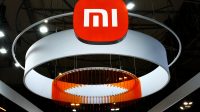Brite Diverse Military Collaborations
![]()
Brite Semiconductor, the focal entity in this narrative, extends chip design services to at least six Chinese military suppliers, as unearthed by an exhaustive Reuters investigation leveraging diverse sources—ranging from company statements and regulatory filings to tenders and academic articles from People’s Liberation Army (PLA) researchers. An interesting dimension is that Brite’s second-largest shareholder and principal supplier, Semiconductor Manufacturing International Corporation (SMIC), finds itself on the U.S. entity list due to alleged ties with Beijing’s military.
Notwithstanding these affiliations, Brite has adeptly secured funding from a U.S. venture capital firm, endorsed by Wells Fargo, and a Christian university. Furthermore, the company maintains access to sensitive U.S. technology through ties with California-based software companies Synopsys and Cadence Design. Importantly, there is currently no substantiated evidence indicating that Brite’s connections with U.S. entities breach existing regulations.
Challenges in Restricting Technology Flows

The Biden administration, supported by bipartisan backing, has actively worked towards restricting technology and investment flows to China’s chip sector. Regulations introduced in October aimed to limit specific U.S. exports of chips and chipmaking tools to China, followed by an August announcement of a ban on certain new U.S. investments in the industry. Nevertheless, Brite’s sustained access to U.S. technology underscores the formidable challenges faced by Washington in preventing inadvertent support for China’s military objectives, signaling the need for a more comprehensive approach.
Senator Marco Rubio, a vocal China critic, expressed apprehension over the revelations, stressing that companies linked to China’s military supply chain should not have access to American technology and investment. He criticized the Biden administration’s strategy, characterizing it as “haphazard.”
Established in 2008 as a joint venture between U.S. venture capitalists and Chinese firms, Brite Semiconductor has deep-seated connections with SMIC. While SMIC was Brite’s largest shareholder until last year, Brite continues to play a pivotal role as a bridge between SMIC and other companies with chip design needs. Brite extends its chip design services to ComNav Technology, a Shanghai-based company contributing to China’s naval capabilities.
While Brite’s affiliations with SMIC and ComNav currently do not appear to contravene U.S. rules, they underscore Beijing’s adept use of less prominent companies to sidestep American export restrictions on more high-profile Chinese firms.
Strategic Access to U.S. Chip Design Software

Despite SMIC’s inclusion on the entity list, Brite has adeptly maintained its relationships with U.S. suppliers of top chip design software, including Cadence and Synopsys. The new rules introduced last year could have restricted Brite from receiving certain items if they were intended for designing advanced chips to be manufactured in China. However, Brite has successfully maintained its ties with these U.S. companies, showcasing the existing loopholes in the current regulatory framework.
From a financial perspective, Brite has garnered support from Norwest Venture Partners, with a 99.7% stake backed by funds from Wells Fargo. Additionally, Biola University, a California-based Christian college, holds a 5.43% stake in Brite. At present, these financial ties do not violate the new rules on investments in China, yet they highlight the pressing need for a more encompassing regulatory framework to address evolving challenges.
As Brite endeavors to list its shares on the Shanghai stock exchange, the exchange has temporarily suspended the process, awaiting clarification on Brite’s independence from SMIC. Questions have arisen regarding whether SMIC is leveraging its position as Brite’s top supplier and part owner to overcharge Brite. The outcome of the listing review, scheduled for December 18, remains uncertain.
In conclusion, the Brite Semiconductor case serves as a vivid example of the ongoing challenges in regulating technology and investment flows to China’s semiconductor sector. Amidst geopolitical tensions, there is an increasing imperative for a more proactive, adaptive approach to safeguard U.S. interests and prevent unintentional support for China’s military ambitions.
Read More (Innovation – Tech Foom)








